Joachim has been traveling around the world. He left Paris on his 25th birthday, came back one year later in 2010. And you're here on his travel blog.
Since he came back, he started writing a book: 360 in 365 »
Cette page est aussi disponible en :
360 in 365 – Joachim voyage autour du monde
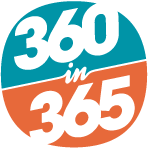
Tiwanaku, BO
Jul 18th, 2010
05:33 PM
Willkakuti, one month later.
Ok yeah I’m late. Like, 18 days without writing, my fan-mail piling up on my cyber doorstep, so yeah. No I’ve not been married against my will and I’m not honeymooning in a forgotten corner of South America.
I just arrived in Colombia after two weeks of non-stop travelling. For the last two weeks I’ve slept in busses and crummy hotels (but cheam crummy hotels) near bus terminals, never more than one night in one city, travelling without anybody with me, travelling fast, making the distance. And there’s a reason for that, I’ve got to be in Medellin on the 23rd, to catch a plane to leave the north of South America and go to the south of North America. One day in Lima, and I left Quito without buying a Panama hat (I’m really sore about it and hope I can find panama hats in Colombia). Anyways. I’m now in Cali, Colombia, with five days to reach Medellin (7 hours away), everything’s great.
But I didn’t want to talk to you about that.
Almost one month ago, I was at a special festival… in Tiwanaku, Bolivia (also written Tihuanaco), for the summerwinter solstice on June 21st. And Winter solstice is quite important, I mean, even for us in the western cultures they put christmas over the pagan solstice (you never really thought the Jesus was born on christmas day, did you?) and we’ve also got a new year 10 days later. Fundamentally, we celebrate the winter solstice. I celebrated Willkakuti, the Aymara New Year, in the pre-colombian and pre-inca ruins near the Lake Titikaka. There’s worse ways of spending a night, and the following morning.
Tiwanaku, two hours west from La Paz, near the Peruvian border, has got the most important ruins in Bolivia. I won’t give you the details because I don’t know them and won’t insult you by copypasting the Lonely Planet, but basically it’s ruins that predates the Incas. The Tihuanacota culture is now extinct, but it inspired the Inca culture so it’s not that bad. There was a huge temple from which some stones are left, and a stone gate, the Puerta del Sol, through which the first rays of the new year sun pass every year on winter solstice. But let’s not get too fast. The temple complex is quite mysterious, because we don’t know lots about the culture at that time.
At the present time, Aymara people have their cultural celebrations there, namely, Willkakuti, their New Year. The Aymara people is one of the indigenous people of Bolivia (pueblos originarios in spanish, but the translation is a bit like, “original people, yeah, they have lots of originality”), the Aymara language is one of the official tongues of the new bolivian constitution, same as Quechua or Spanish. The Aymara New Year starts at the sunrise on the day of the solstice. The days are starting to last longer, the cycle has started again. It’s a good occasion to grab a drum and a quena and to go make some bolivian music in the streets, or grab a bottle and a girl and go dancing Morenada or Caporal in the streets to the sound of the bolivian music. So that’s what I did.
If you want the longer story, read it in French. I don’t want to translate everything, 1700 words is quite a lot and I’m not paid (yes I am through micro-sponsors but still). So yeah. I arrived iN Tiwanaku in the afternoon, made some tourist friends there, and then we went for a drink as the night fell, and the music started to play on the stage, and eight hours after that I was dancing with a crazy bunch of bolivians to crazy bolivian music and it was quite fun. At 4 in the morning, it was quite cold. Dancing and alcool and more dancing (and more alcohol) helped while we were dancing, but when we stopped to go wait to access the ruins for sunrise, it was quite cold.
Once near the temple complex we still had to wait for sunrise, after all it’s why we were there, all 2000 of us. So I took pictures of people playing bolivian music with drums and quenas and red ponchos and their checkered rainbow flags (the traditionnal flag of the indigenous people). Inside the temple, priests were conducting ceremonies but I couldn’t watch that. Too many people around.
Then there was a rumor : Evo Morales was in the temple for the sunrise! Evo! Coca grower, Aymara speaker, president of Bolivia! In a reelection campain this year!
And then an old indian guy with a red poncho starts speaking with me, dancing with me, calling me padrino, and then asked me to buy him a flag with the checkered rainbow, so yeah I offered him one, and he was so happy to wave it around! Aymara pride!
Then another rumor! The sun has risen but is kept behind the clouds so we cannot see it. The eldest people in the crowd cannot remember a solstice sunrise with so much clouds. Some people say that the Sun God has a message for Evo, other people think it’s quite bad and then, around 8 or 8:30, Evo left. And the sun rose. The first rays were a bit late to go through the gate of the sun, but we could conduct the rest of the ceremonies, like raising the hands, palms facing the sun, to get the awesome power of the new year. So yeah, I did that.
The legend then tells us that I was invested in the all-powerful energy of the Aymara Sun God. But then the truth will have to be debated by my biographers.
Meanwhile, have a happy new year 5519.
2 Comments

All the contents on this website has been created by Joachim unless otherwise noted.
Copyrights and licenses - ©2009 Joachim
Served around the world by WordPress. Hosted by Dreamhost.
A Production Joachimesque



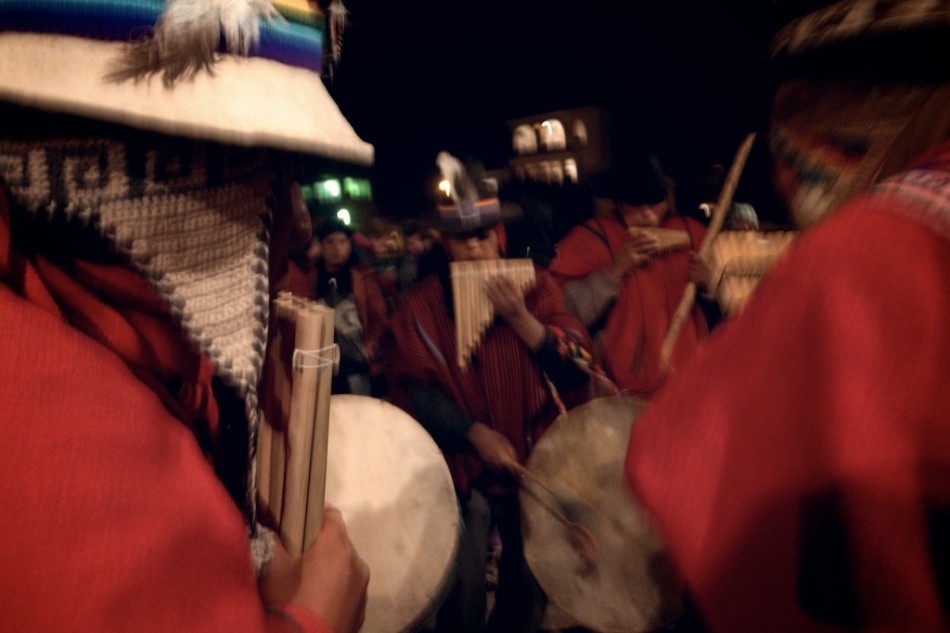
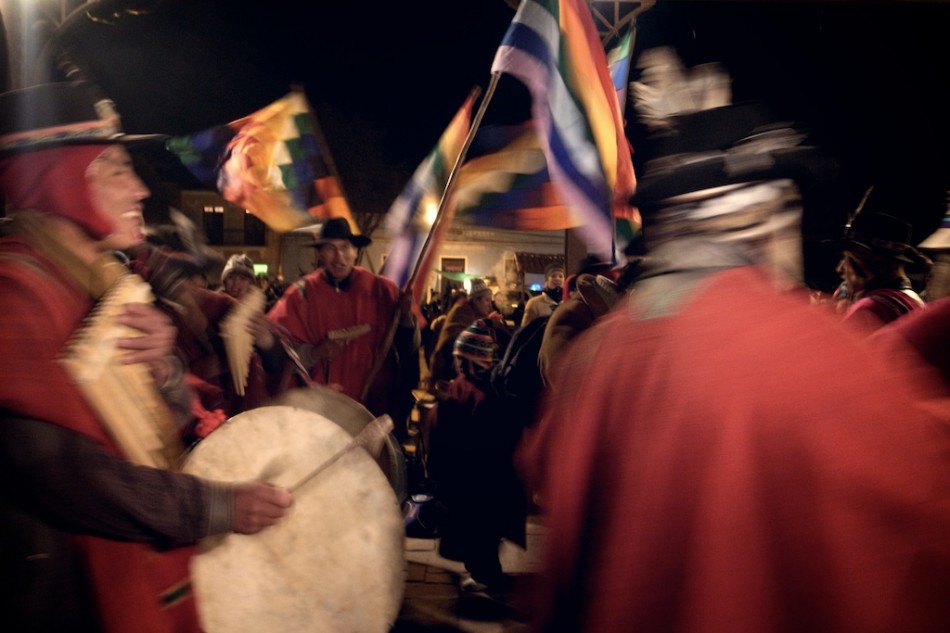




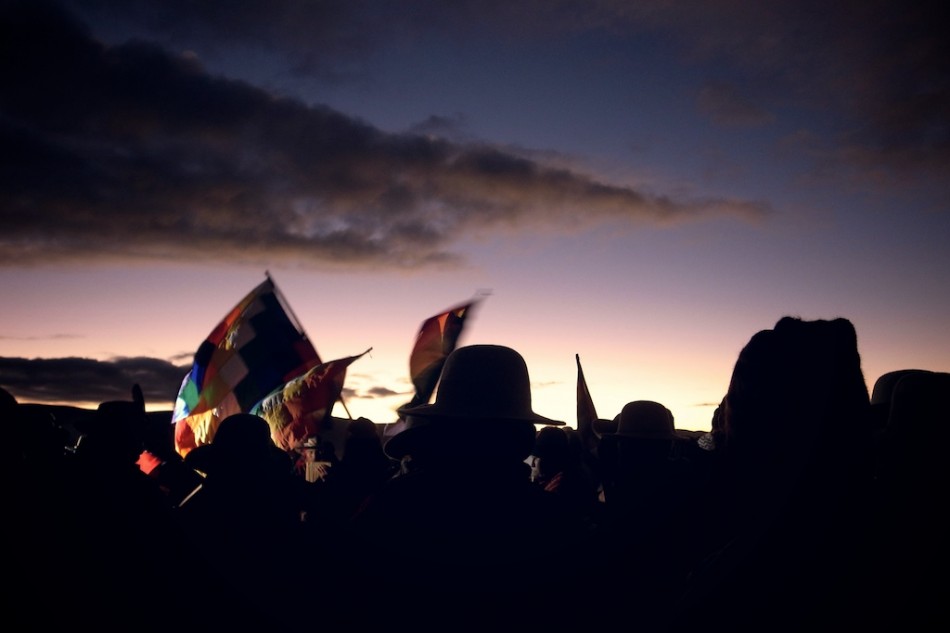
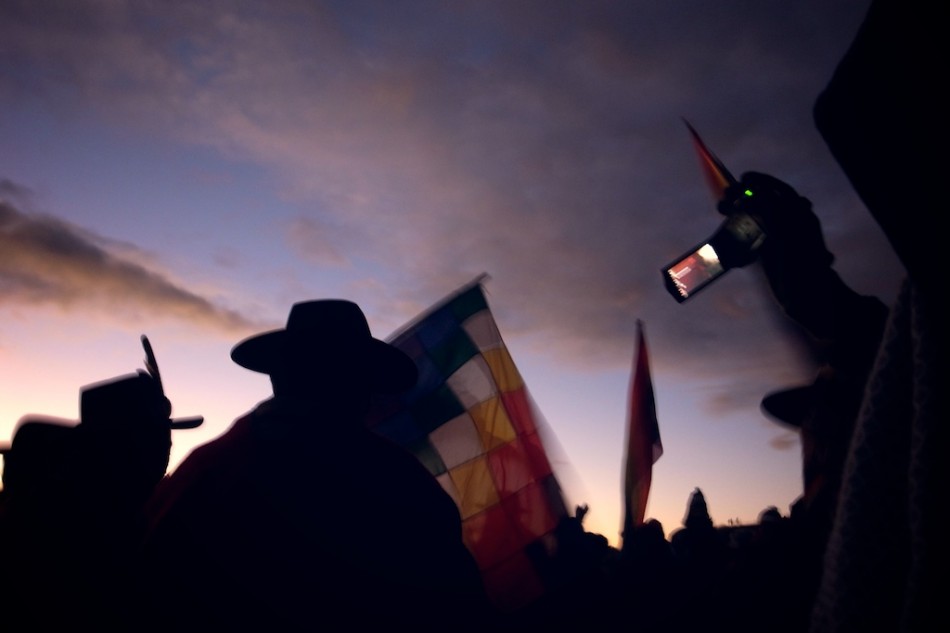

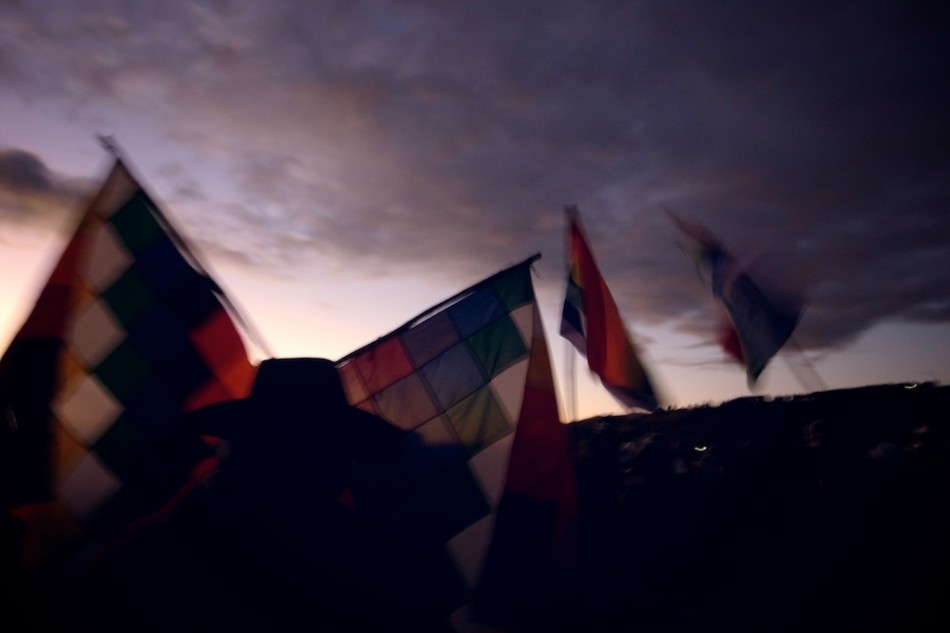


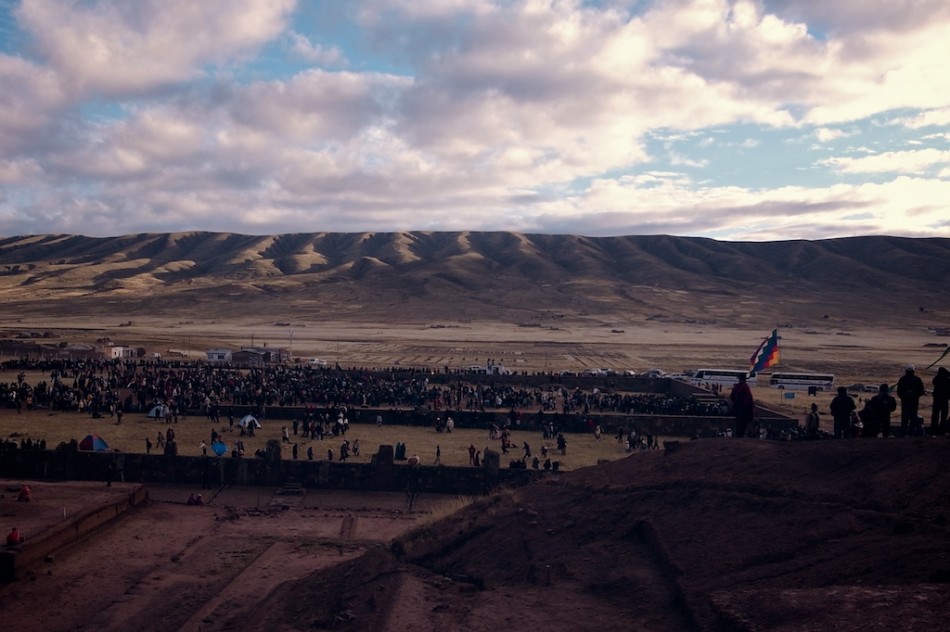

Heureusement pour tes biographes, tu laisses quelques tomes d’auto-biographie pour leur faciliter la tâche :D
Comment by Julien — Jul 18th, 2010 @ 06:34 PM
Hello Joachim,
C’est amusant comment tu explores les « originaux » du haut plateau, j’aime bien ta façon de l’écrire, cela fait voyager et encore plus quand on voit tes superbes photos, bravo !
Les moments que tu décris représentent un concentré d’un aspect de la vie bolivienne, Les « armes sécrètes » (L’alcool et la danse), la wipala (drapeau indigène, carré, pour bien symboliser l’équité entre les communautés), les ponchos rouges (symbole de gardiens de l’actuelle démocratie) et même le président Evo Morales ! Waouh ! Tu es tombé pile poil et en plus tu es maintenant bénit avec l’énergie du dieu Inti en cette nouvelle année andine 5519 !
Un seul ingrédient manquant, la coca (*), tu l’as croisée ?
Ciao ! Ricardo
PS : plus de nouvelles de Monica ?
*Attention je parle de la coca feuille et non pas de la cocaïne.
Sinon, tu le sais sûrement mais en aucun cas ne transporte pas la moindre feuille de coca hors de la frontière bolivienne !
Comment by Bellott ricardo — Jul 20th, 2010 @ 04:10 PM